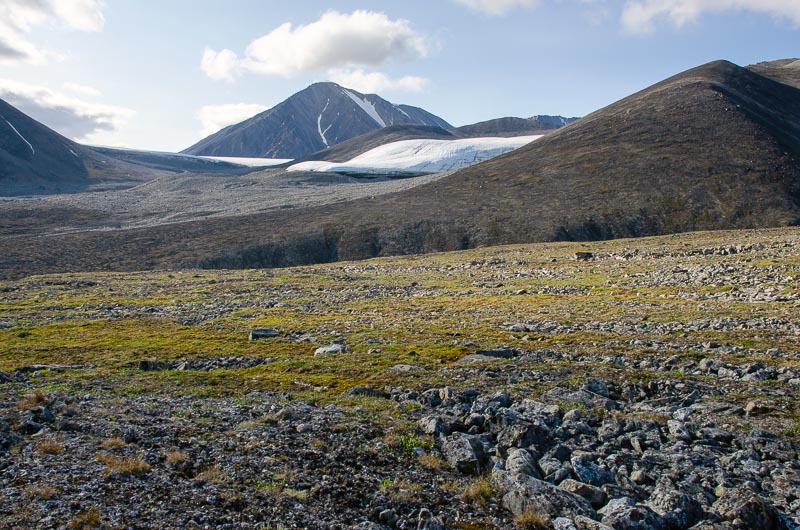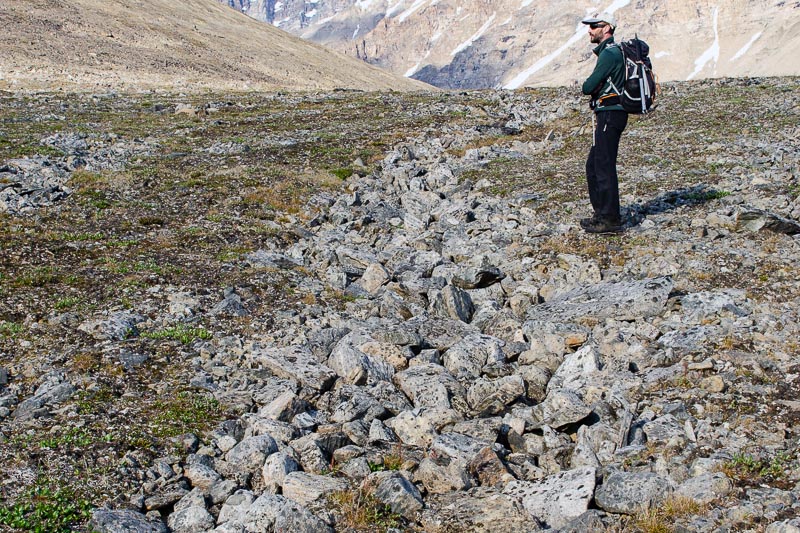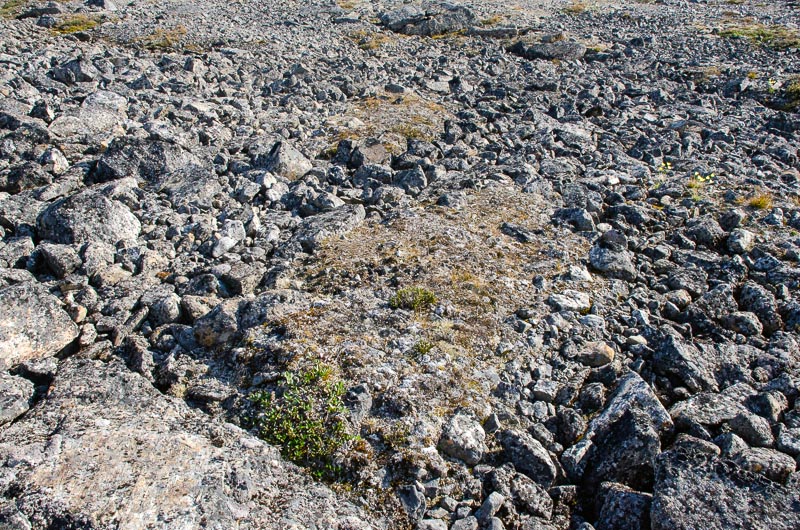Tundra and periglacial phenomenaAt the lower levels at which we worked, and outside the Little Ice Age Limits, the tundra is well developed, and a continuous cover of vegetation is typical. These surfaces have been exposed for thousands of years. Consequently, well-developed periglacial features are not common, and it is only at intermediate levels, where the vegetation is scarcer, are typical features seen. These include stone circles, stone polygons, stone streams, stone stripes and solifluction lobes. However, even here, they are much less well developed than in other Arctic regions such as Svalbard (see elsewhere on this website). |
 This plateau at around 300 metres above sea level is characterised by patchy vegetation and areas where frost sorting of stony ground is evident. Arctic poppies in the foreground. |  Patterned ground, comprising irregular stripes (stone streams) and clusters of boulders, with vegetation between. |  The plateau is draped with very old glacial deposits which have been subject to stone-sorting for millennia. Tundra vegetation grows preferentially on areas of finer-grained sediment. |  The non-glacierised gully and the bed of a nearly dried-up stream. Spring snow-melt gives rise to flood conditions denoted by the paler banks of vegetation-free ground. |
 The ground is underlain by permafrost but the active layer, formed in summer, is wet, and the unconsolidated sediment is able to flow and form ‘solifluction lobes’. |  Stone-sorting in the active layer is not well developed in this image, but the crude stone circles are still evident. |  A stone stream on a slope, formed by stone sorting and removal of fine sediment from between the coarser fragments. |  A stone circle, illustrating how the finer-grained material preferentially encourages the growth of plants, including Arctic willow in the foreground. |